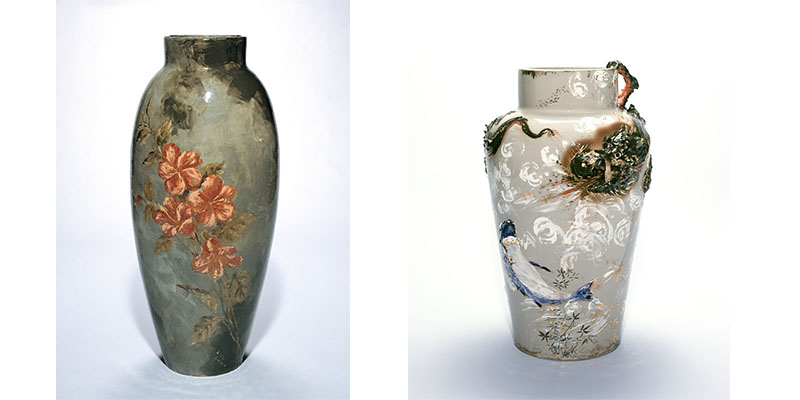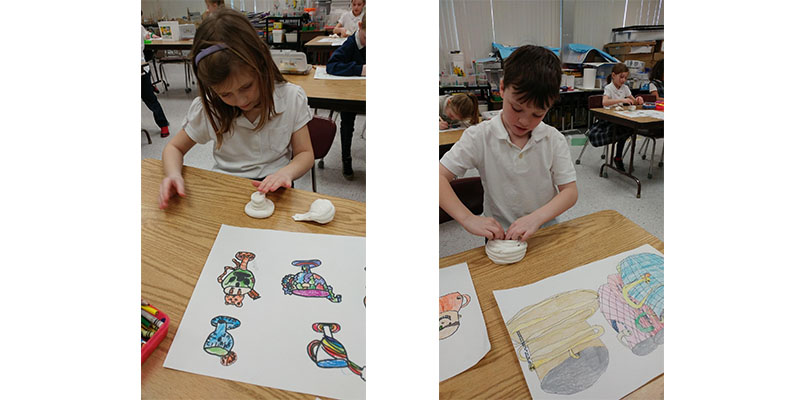- Art Home
- Exhibitions
-
Explore the Collection
- Explore the Collection Home
- African Art
- American Paintings, Sculpture and Drawings
- Contemporary
- Decorative Arts and Design
- East Asian Art
- European Paintings, Sculpture and Drawings
- Fashion Arts and Textiles
- Musical Instruments
- Indigenous American Art
- Photography
- Prints
- South Asian Art, Islamic Art and Antiquities
- Provenance and Cultural Property
- Conservation
- Meet the Curators
- Digital Resources
- Art Bridges Cohort Program
- Events & Programs Home
- Calendar
- Accessibility
- Adults
-
Families & Teens
- Families & Teens Home
- 10x10 Teen Art Expo
- Art on the Rise
- Art Together: Art Making for Families with Children Ages 3–5
- Boy Scouts / Girl Scouts
- CAM Kids Day
- Family Storytime and Gallery Walk
- Family Studio: Art Making for Families with Children Ages 6–12
- Games in the Galleries
- Members-Only Baby Tours
- Public Baby Tours
- REC Reads
- Rosenthal Education Center (REC)
- See Play Learn Kits
- Summer Camp
- Teachers
- Community Outreach
- Fundraisers
- Plan Your Own Event

- Art Home
- Exhibitions
-
Explore the Collection
- Explore the Collection Home
- African Art
- American Paintings, Sculpture and Drawings
- Contemporary
- Decorative Arts and Design
- East Asian Art
- European Paintings, Sculpture and Drawings
- Fashion Arts and Textiles
- Musical Instruments
- Indigenous American Art
- Photography
- Prints
- South Asian Art, Islamic Art and Antiquities
- Provenance and Cultural Property
- Conservation
- Meet the Curators
- Digital Resources
- Art Bridges Cohort Program
- Events & Programs Home
- Calendar
- Accessibility
- Adults
-
Families & Teens
- Families & Teens Home
- 10x10 Teen Art Expo
- Art on the Rise
- Art Together: Art Making for Families with Children Ages 3–5
- Boy Scouts / Girl Scouts
- CAM Kids Day
- Family Storytime and Gallery Walk
- Family Studio: Art Making for Families with Children Ages 6–12
- Games in the Galleries
- Members-Only Baby Tours
- Public Baby Tours
- REC Reads
- Rosenthal Education Center (REC)
- See Play Learn Kits
- Summer Camp
- Teachers
- Community Outreach
- Fundraisers
- Plan Your Own Event
Blog: CAM Uncovered
Blog: CAM Uncovered
- Home
- Plan Your Visit
-
Art
- Art Home
- Exhibitions
-
Explore the Collection
- Explore the Collection Home
- African Art
- American Paintings, Sculpture and Drawings
- Contemporary
- Decorative Arts and Design
- East Asian Art
- European Paintings, Sculpture and Drawings
- Fashion Arts and Textiles
- Musical Instruments
- Indigenous American Art
- Photography
- Prints
- South Asian Art, Islamic Art and Antiquities
- Provenance and Cultural Property
- Conservation
- Meet the Curators
- Digital Resources
- Art Bridges Cohort Program
-
Events & Programs
- Events & Programs Home
- Calendar
- Accessibility
- Adults
-
Families & Teens
- Families & Teens Home
- 10x10 Teen Art Expo
- Art on the Rise
- Art Together: Art Making for Families with Children Ages 3–5
- Boy Scouts / Girl Scouts
- CAM Kids Day
- Family Storytime and Gallery Walk
- Family Studio: Art Making for Families with Children Ages 6–12
- Games in the Galleries
- Members-Only Baby Tours
- Public Baby Tours
- REC Reads
- Rosenthal Education Center (REC)
- See Play Learn Kits
- Summer Camp
- Teachers
- Community Outreach
- Fundraisers
- Plan Your Own Event
- Give & Join
- About
- Tickets
- Calendar
- Exhibitions
- Blog
- Shop
Teacher Blog: Celebrating Women From the CAM Collection Preview
by Angela Mascolino
3/18/2019
Evenings for Educators , Maria Longworth , Rookwood Pottery Company , Teacher resources
The March Evenings For Educators will celebrate the accomplishments and contributions of women artists such as Georgia O’Keeffe, Elizabeth Nourse and others. My second grade students enjoyed learning about Rookwood Pottery founder, Maria Longworth Nichols Storer and her rival, Mary Louise McLaughlin. What an amazing opportunity to introduce my students to the art and stories of Cincinnati artists and then encourage them to go see the CAM treasures in person!
My lesson focuses on vessels and vases. In addition to Storer’s Aladdin Vase and McLaughlin’s Ali Baba Vase, I used Google Art & Culture to share images and information about objects from antiquity to beautiful coffee and tea serviceware from the 1900’s. All of the treasures are part of the CAM permanent collection. I asked students to identify the materials used and they gained inspiration for their own creations by viewing the fantastic dragon on the Aladdin Vase, the delicate floral painting on the Ali Baba Vase and the animals featured on several other pieces.
Students observed how the lines and motifs on the rounded vessels and vases curve. I showed them actual vases and cylinder containers in my classroom and they noted how the openings and bottoms of the objects were circular but when viewed from the side, the openings looked more oblong and the bases of the objects were curved. I demonstrated the difference between drawing a flat vase shape and how changing a straight line to a curved one makes the two-dimensional drawing represent a three-dimensional rounded object. My students then got to work as vessel designers. They drew vessels featuring animals and other patterns that interested them. Once their drawings were complete, they used clay to sculpt three-dimensional versions of their designs. As my students sculpted, they had to problem solve and sometimes start over if their clay form was not stable. This is one of my favorite lessons to teach as it combines local and cultural history, story, math and my students’ creativity. My young artists are learning from artists of the past and creating the future.

Left: Mary Louise McLaughlin (b. 1847, d. 1939), American Ali Baba Vase, 1881 Earthenware Gift of Women’s Art Museum Association, 1881.239
Right: Maria Longworth Nichols Storer (b. 1849, d. 1932), American Aladdin Vase, 1882 Earthenware, limoges glaze line Gift of the Rookwood Pottery Company, 2002.94

Cincinnati, OH 45202
Toll Free: 1 (877) 472-4226
Museum Hours
Museum Shop
Terrace Café
Library
The Cincinnati Art Museum is supported by the generosity of tens of thousands of contributors to the ArtsWave Community Campaign, the region's primary source for arts funding.

Free general admission to the Cincinnati Art Museum is made possible by a gift from the Rosenthal Family Foundation. Exhibition pricing may vary. Parking at the Cincinnati Art Museum is free.
Generous support for our extended Thursday hours is provided by Art Bridges Foundation’s Access for All program.

General operating support provided by:



